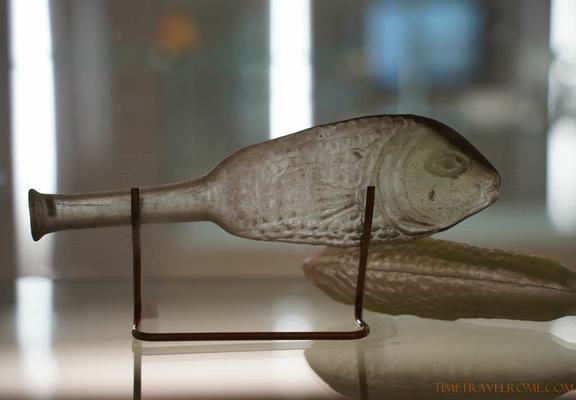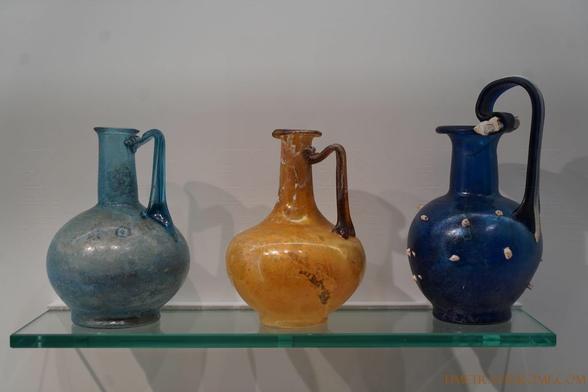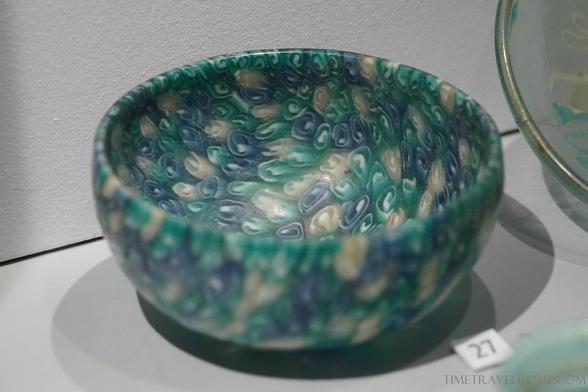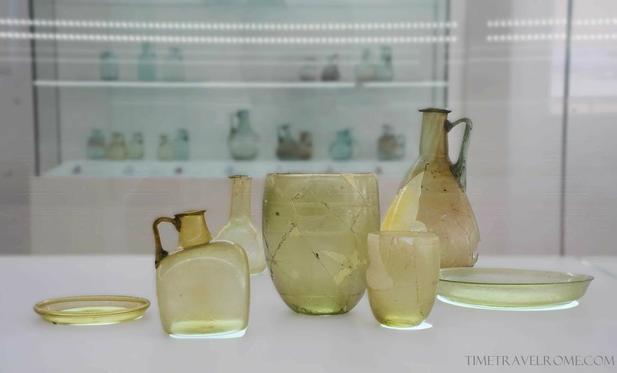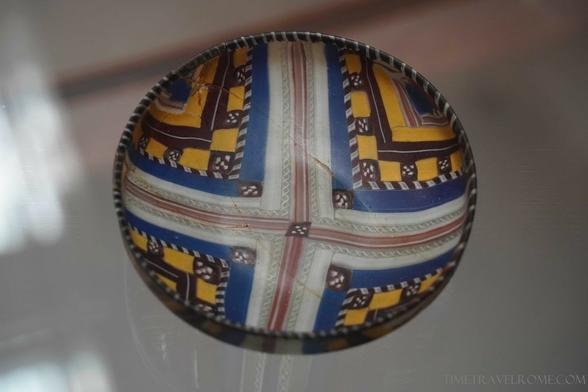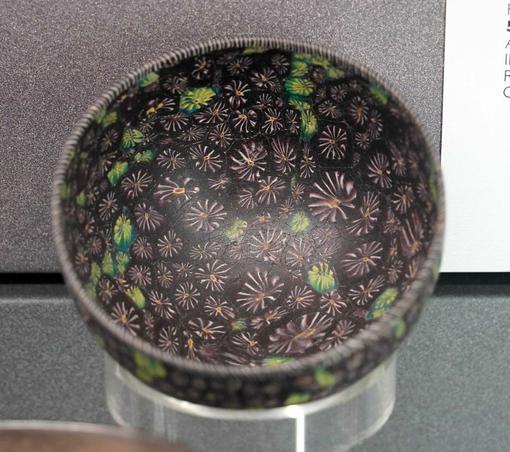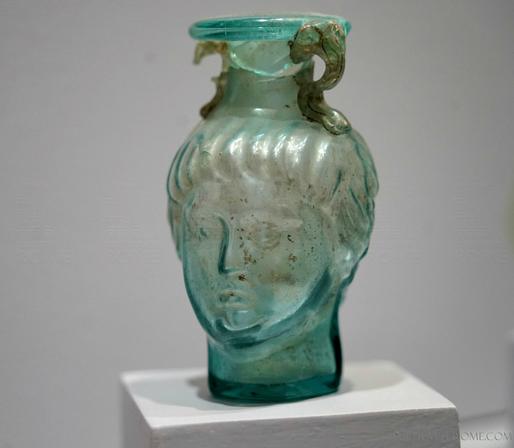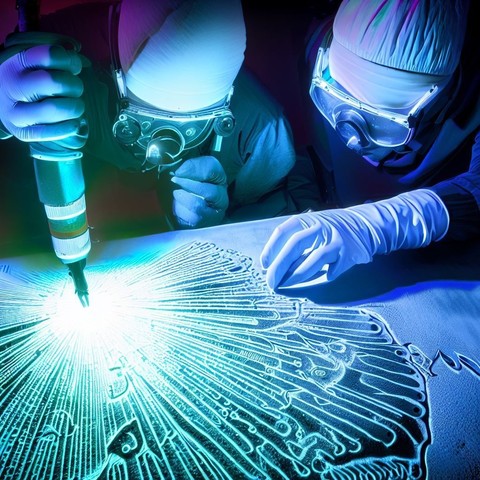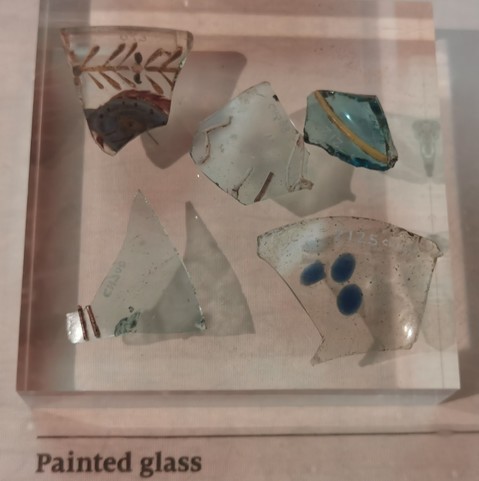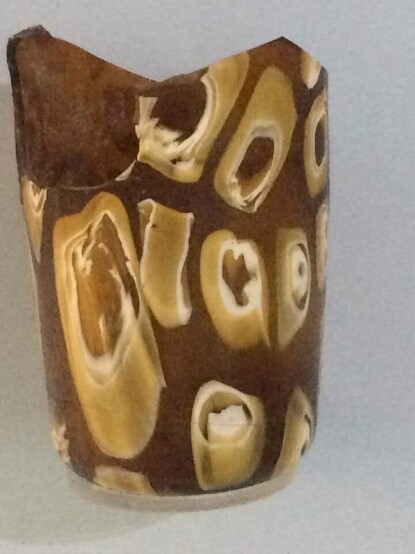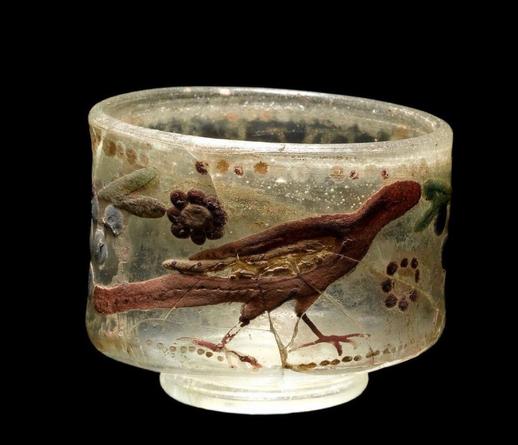🪔 #GlassObjectThursday A Roman glass fish vessel (1st-3rd c. CE) from Archaeological Museum Zadar reveals the sophistication of imperial glassmaking. Made through free-blowing, this vessel was likely used to contain precious oils.
📍Archaeological Museum Zadar
📸 Personal photo
#RomanGlass #archaeology #AncientArt #RomanHistory
@archaeodons @histodons
@antiquidons
#RomanGlass
🪔 One more beautiful set of roman glass tableware dated to the 1-3rd c. AD from the Museum of Roman Glass in #Zadar, Croatia.
#glassobject #romanglass
@archaeodons @histodons
@antiquidons
🪔 For #Romanglass: Portrait of Roma on gilded glass - it was found ten meters below the current street level during the construction of the Porta Metronia station of the Metro C line in Rome. Dated to the 4th c AD, it was likely buried at the time of the construction of the Aurelian Walls. Now in Musei Capitolini, Rome. 📸 me
🪔 For eyes pleasure: a Gold-glass portrait of two young men from the Museo Civico Archeologico in Bologna. Produced in the 1st quarter of 4th century, it bears a Latin transcription of Greek: PIE ZESES, or "Drink and you will live". 📸 me
🪔 This particular double portrait was pressed into the fresh mortar on the burial niche - the remains of the mortar can still be seen.
#ancientglass #romanglass #romanportrait #antiquity #ancientart #ancientrome
@archaeodons @histodons
@antiquidons
🪔 This is a roman glass flask in the form of a gladiator helmet with ‘snake-thread’ trails. It was made in Rhineland in the 3rd c. AD. Now in the British Museum. 📸 me
#ancientglass #romanglass #glassobjet
🪔 For eyes pleasure: three roman glass vessels dated to the 1st-3rd cc AD, now on dispay in the Romanité Museum of Nîmes. 📸 me
👉 Don't hesitate to write in comments what kind of posts you would like to see here: pics, more info about objects, links to "long" blog posts, other... Your feedback is welcome ! 🙂🍀
#romanglass #glassobject
#romanarchaeology #archaeology #antiquity #ancientart #ancientrome #ancienthistory
@archaeodons @histodons
@histodons
🪔 This is a roman #millefiori glass bowl from the Museum of Antiquities in Rouen, France. Romans called the city #Rotomagus - it was the second city of Gallia Lugdunensis, after #Lugdunum, modern Lyon. 📸 me
#romanglass #ancientglass
@archaeodons @histodons
@antiquidons
🪔 This is a roman tableware glass set from the Roman Glass Museum of #Zadar, Croatia. This museum has an exceptional collection of roman glass objects of all kinds. Vessels of the photo are dates to the 1st-2nd c. AD. 📸 me
#romanglass #glassobject #antiquity #ancientart
@archaeodons @histodons
@antiquidons
🪔 For eyes pleasure: a roman "mosaic glass" cup, on display in the #Luxembourg Museum of Arts and History. It is dated to the 2nd-3rd c. AD; the region of Luxembourg is very rich in archaeological sites and finds. 📸 me
#romanglass #archaeology #antiquity #ancientart
@archaeodons @histodons
@antiquidons
🪔 For #GlassObjectThursday: a beautiful small Amphoriskos - a perfume bottle - from the #Roman Glass Muzeum of #Zadar in Croatia. It is likely dated to the 2nd half of the 1st c AD. 📸 me
#romanglass #ancientglass #ancientart
@archaeodons @histodons
@antiquidons
This is one of several new videos from the Corning Museum of Glass demonstrating techniques of ancient Roman glassblowing. Check out their YouTube channel. Great fun! https://youtu.be/e8wf8jVnTJg?si=dQLPP7eXCtl_SxnA #arthistory #glassblowing #ancientart #ancientglass #romanglass #romanart #corningmuseumofglass #MastoArt
🪔 Just for eyes pleasure: a roman #millefiori glass cup exhibited in the Museo Civico Archeologico di Bologna. The cup is dated to the 1st c. AD and it was found in Adria - a town in the province of Rovigo in the #Veneto region of Italy. 📸 me
#romanglass #ancientglass #ancientromanglass
#romanarchaeology #archaeology #antiquity #ancientart #ancientrome
@archaeodons @histodons
@antiquidons
A short video from the Corning Museum of Glass, in which director of instruction Bill Gudenrath recreates a simple Roman glass blown vessel: https://youtu.be/fFSNw1dv_YM?si=Akbl5zujlyvhJ8IW #glass #glassblowing #RomanArt #romanglass #arthistory #corningmuseumofglass
🪔 This head-shaped vessel was found in a Gallic amphora. It features two faces: one juvenile and beardless, the other elderly and bearded. It dates from the late 2nd c. AD and is now in the Antiquities Museum of Rouen, France. 📸 Own pic.
#romanglass #archaeology #ancientart
@archaeodons @histodons
@antiquidons
Scientists at University of Cambridge and Max Planck Institute have unlocked a novel method to manipulate light using nanofabrication on ancient Roman glass. They've harnessed this in a groundbreaking study published in Nature Communications, demonstrating how photonic crystals can be crafted on ancient glass artifacts, mirroring modern applications from optical communication to sensing.
https://phys.org/news/2023-09-scientists-nanofabrication-photonic-crystals-ancient.html
#JuanAround #Nanofabrication #RomanGlass #ScienceNews #InnovationDiscovery"
#romanglass #rome #gladiator #glassblowing.
This week something a bit unusual from the Archaeological Museum in Split and originally from Salona.
It is the base of a glass mould to blow a rectangular bottle. The Inscription reads MISCENIUS AMPLIATUS FACIT SALONAS. It was made by Ampliatus - a name we know from other bottles. The unusual aspect: It has gladiators!
But why? Was this a souvenir from the games?
#RomanGlass on Fridays: It may not be complete. But in the top left corner is a fragment of painted glass. The original motif was probably a fish, or less likely a bird and this fragment is currently in #Chesters Museum on #hadrianswall.
it is a type of glass that you can chase from Cologne on the Rhine and on the Limes all the way through Britain to Oban and then to the Shetland Isles, only for it to show up in Denmark. The type dates to the late second/early 3rd century.
Roman millefiori glass from Serbia. Most glasses of this type are open shapes like bowls or shapes. The narrow base suggests a tall beaker. 1st or 3rd c AD. #RomanGlass #archaeology #romanserbia #glass
Via Studio Escalier:
“Roman glass cup from the Himlingøje burial site in Denmark, from 2nd and 3rd century, found in graves of a rich or princely family. [Cups like this one] are so well-preserved that finders have used them mistakenly as vases for flowers, without realizing that they were ancient productions.”
#Archaeology #Anthropology #AncientRome #RomanGlass #Denmark #Himlingoje
☀️ For #EpigraphyTuesday: piece of a roman glass cup with a gladiators fight scene. Dated to the 1st-2nd c. AD, this cup bears names of some presumably famous gladiators: Petraites, Prudes, Proculus and Cocumbus. Now in Lugdunum Museum, Lyon. #romanglass 📸 Own pic.
